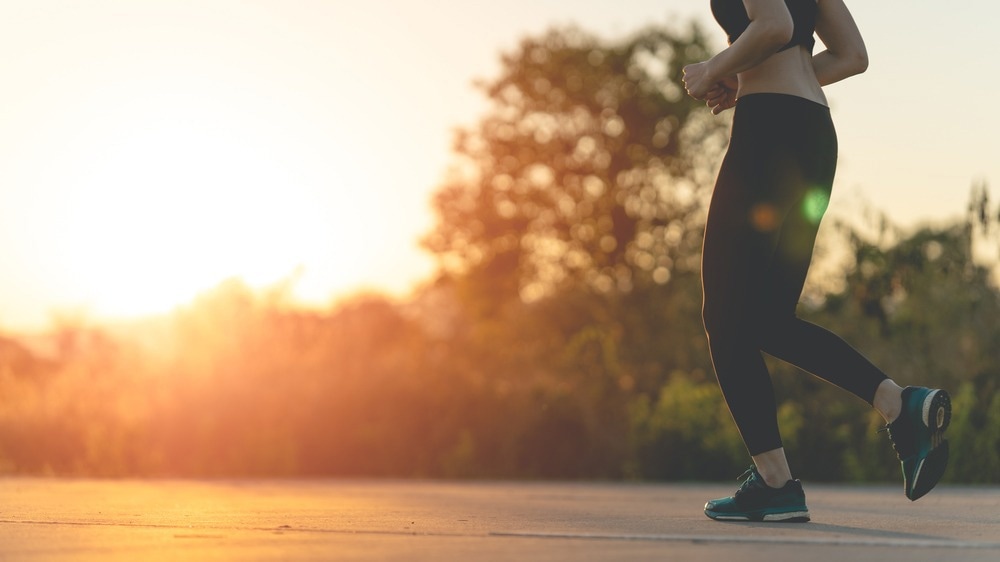In a recent study published in Health Science Reports, researchers evaluated the impact of Pfizer‐BioNTech’s BNT162b2 messenger ribonucleic acid (mRNA) vaccine booster on the maximum oxygen uptake capacity (VO2max) among recreational endurance athletes.
 Study: Effect of BNT162b2 mRNA booster vaccination on VO2max in recreational athletes: A prospective cohort study. Image Credit: PIPAT YAPATHANASAP/Shutterstock
Study: Effect of BNT162b2 mRNA booster vaccination on VO2max in recreational athletes: A prospective cohort study. Image Credit: PIPAT YAPATHANASAP/Shutterstock
Background
Severe acute respiratory syndrome coronavirus 2 (SARS-CoV-2) vaccinations have usually been tolerated well by athletes; however, the apprehension of performance loss, reduced immunological responses, or occurrence of adverse effects post-vaccination could increase vaccination reluctance among athletes.
Recent studies have reported that VO2max levels are negatively associated with coronavirus disease 2019 (COVID-19) vaccinations; however, the effects of COVID-19 vaccination on exercise capacities have not been extensively evaluated and require further investigation.
About the study
In the present study, researchers evaluated the effects of BNT162b2 booster vaccination on VO2max among recreational endurance athletes.
VO2max was described as the maximum value for the 30-second rolling average of the VO2 uptake and recreational endurance athletes were described as individuals who have performed endurance sports, such as running, swimming, or cycling, for ≥4.0 hours per week for ≥4.0 years. Athletes scheduled for BNT162b2 booster doses were evaluated one week before (pre-booster) and after (post-booster) booster vaccinations.
Serum samples were obtained from adult athletes who were doubly vaccinated before the commencement of the study and were scheduled for BNT162b2 booster vaccinations for assessing high‐sensitivity troponin I (hsTnI), high-sensitivity C‐reactive protein (hsCRP), and serum lactate levels. In addition, the athletes underwent transthoracic echocardiography (TTE) and bicycle cardiopulmonary exercise tests (CPET).
The study participants filled out questionnaires pertaining to side effects of COVID-29 vaccinations, including pain and/or swelling at the site of injection, sore or palpable ipsilateral axillary lymph node(s), elevated body temperature greater than 37.5°C, myalgia, fatigue, headaches, chest pain, dizziness, palpitations, or dizziness.
Additionally, the athletes were requested to subjectively evaluate changes in their training intensity and volume post-booster vaccination. The study participants were recruited from two University hospitals, one at Antwerp (site A) and the other at Belgium (site B), and were required to refrain from performing any intensive exercises in the initial three days post-booster vaccination.
Results
In total, 47 recreational endurance athletes were recruited for the study (27 athletes and 20 athletes from site A and site B, respectively), of which three were unable to provide two maximal test results, including a man and a woman pre-booster, and a woman post-booster vaccination (respiratory exchange ratio (RER): 1.3 to >1.1 and VO2max: 50.0 to >46 ml per kg per minute.
In addition, one man was not vaccinated eventually, and another man developed a SARS-CoV-2 infection immediately post-vaccination. As a result, 42 athletes were considered for the final analysis, of whom 71% were males. The average age of the study participants was 37 years, and their average BMI (body mass index) value was 23 kg per square meter.
No study participant smoked during the study period, and seven athletes had prior COVID-19 history. On average, the study cohort performed sports for 7.4 hours weekly, and almost every athlete performed >1 type of sport. Cycling, running, swimming, and other sports were performed by 88%, 54%, 20%, and 44% of the study participants, respectively.
A significant reduction of three percent was observed in VO2max values post-booster dose administration (pre-booster and post-booster values were 49 ml/kg/minute and 47 ml/ kg/minute, respectively), without significant differences in peak lactate or RER values. The findings were confirmed after evaluating only individuals documenting no reduction in training intensity or intensity (n=22) or only those without prior COVID-19 history (n=35).
A nine percent reduction of probable clinical relevance was observed in 19% (n=8) of athletes, whereas lactate curves and CPET parameters for others were similar, with no echocardiographic or serological evidence of myocarditis. A marginal but statistically significant elevation in hsCRP values was observed a week post-booster administration. Sport participation was largely unaltered by mildly reduced post-booster vaccinations.
The team found significantly lowered O2 (oxygen) pulse seven days post-booster vaccinations (from 19 ml/beat to 18 ml/beat) among female athletes, but the difference was not significant among male athletes. Serological lactate levels increased significantly with the stage of the exercise, without any differences by the status of COVID-19 vaccination. The 30′ lactate evaluation was completed by only five athletes, which showed no statistically significant post-booster changes after correction, with median values for pre-booster and post-booster levels being 3.2 mmol/L, and 4.4 mmol/l, respectively.
A marginal elevation in hsCRP levels was observed post-booster administration, with median pre-booster and post-booster values being 0.6 mg/L and 0.8 mg/L, respectively. There were no major adverse events post-booster vaccination. The most commonly reported side effects were pain, and fatigue at the site of injection experienced for a median of 2.0 days and 1.0 days by 81%, and 57% of the study participants, respectively. The majority of the athletes documented no significant change in training intensity or volume a week post their booster vaccinations.
Conclusion
Overall, the study findings showed a significant reduction in VO2max levels a week post- BNT162b2 vaccination among recreational endurance athletes. Further research must be conducted to determine the clinical significance of the observations.